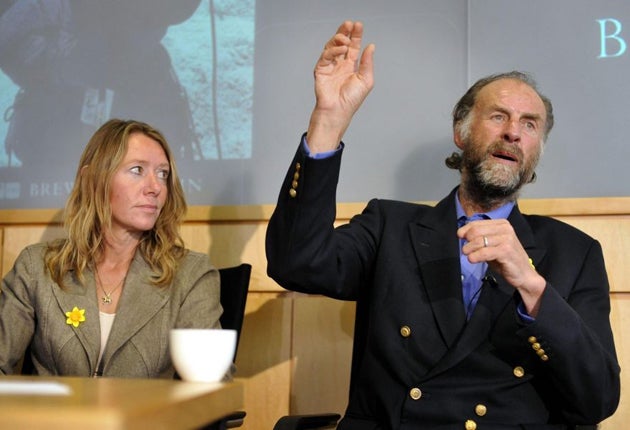How I conquered Mount Everest and vertigo, by Sir Ranulph
Explorer raised £3m for cancer charity

Having walked for seven hours in freezing darkness to reach the summit of Everest at the third attempt, Sir Ranulph Fiennes could have been forgiven for relishing the view from the top of the world. Instead, the famously fearless adventurer found himself battling vertigo.
The 65-year-old explorer, who last week became the first individual to have crossed the globe via both poles as well as climb its highest mountain, returned to Britain yesterday to admit that he had to conquer his fear of heights before looking down from the 8,848m peak to take in his achievement. Sir Ranulph described how his progress up the mountain to raise £3m for the Marie Curie Cancer Care charity was punctuated by the sight of bodies of climbers who had perished. But he said the sight from the top of the Himalayas had made the three-week physically and mentally exhausting ordeal worthwhile.
Speaking at a press conference to mark his return to London, he said: "I get vertigo and don't like looking down. But if you are there, you might as well look once. When I actually got to the top, the emotional side of getting there was, to some extent, blurred by amazement at what we could see.
"Way down below, you could see the top of all the frilly clouds, and here, there and everywhere you've got mountain tops poking through. To use a cliche, it's just like fairyland."
The grizzled veteran of more than 30 expeditions completed the climbing feat only after twice having to turn his back on the summit in the final stages of the ascent on previous attempts. In 2005, he suffered a heart attack at 8,500m and last year returned to the mountain only to be defeated by exhaustion.
After that attempt he declared that he had learnt his lesson and would never try to climb Everest again, saying that to do so would be "bad luck".
That assertion was underlined by medical tests which showed that a triple heart bypass operation in 2003 and years of battling through arctic conditions had left him with lungs that function at just 80 per cent of capacity even in normal air quality. Oxygen levels at the summit of Everest are just one third of those at sea level.
But the explorer decided to try once more after falling £400,000 short of his £3m fundraising target last year. He has raised nearly £6m for Marie Curie after he lost two of his three sisters and his first wife, Ginny, to whom he had been married for 33 years, to cancer in an 18-month period.
He said that he had been spurred on last week by the twin mantras of "Plod for ever" and "Die high". He explained the last encouragement was based on the idea that "If you're going to die anyway, why die low?"
Subscribe to Independent Premium to bookmark this article
Want to bookmark your favourite articles and stories to read or reference later? Start your Independent Premium subscription today.

Join our commenting forum
Join thought-provoking conversations, follow other Independent readers and see their replies